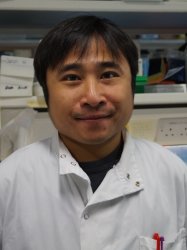BibTex format
@article{Harrod:2016:10.1038/onc.2016.382,
author = {Harrod, A and Fulton, J and Nguyen, VTM and Periyasamy, M and Ramos, Garcia L and Lai, C-F and Metodieva, G and de, Giorgio A and Williams, RL and Santos, DB and Jimenez, Gomez P and Lin, M-L and Metodiev, MV and Stebbing, J and Castellano, L and Magnani, L and Coombes, RC and Buluwela, L and Ali, S},
doi = {10.1038/onc.2016.382},
journal = {Oncogene},
pages = {2286--2296},
title = {Genomic modelling of the ESR1 Y537S mutation for evaluating function and new therapeutic approaches for metastatic breast cancer},
url = {http://dx.doi.org/10.1038/onc.2016.382},
volume = {36},
year = {2016}
}

